The R34 Nissan Skyline is arguably the most coveted import tuner car ever. But why exactly is it illegal in the US? And what caused them to be banned?
Myths and urban legends suggest that it was “too powerful” for US streets, but in reality, it was partly because corporate elites started realizing that they were losing money to foreign cars. This was fueled by the fact that JDM-spec Skylines did not meet US safety standards.
The illegality of these cars breaks the hearts of countless car enthusiasts in the US. Unless you want to spend a fortune or risk a hefty fine (and possibly jail time), you won’t be able to own the R34 Skyline. Not until 2024 at least, thanks to the 25-year import law.
R32 and R33 Skylines, however, are much easier and less expensive to source because they were built before 1995 and fall under the 25-year bracket.
In this article, we’ll discuss why Nissan Skylines are illegal in the US, along with everything you need to know before you try to import one.
Why Exactly Are Nissan Skylines Illegal in the US?
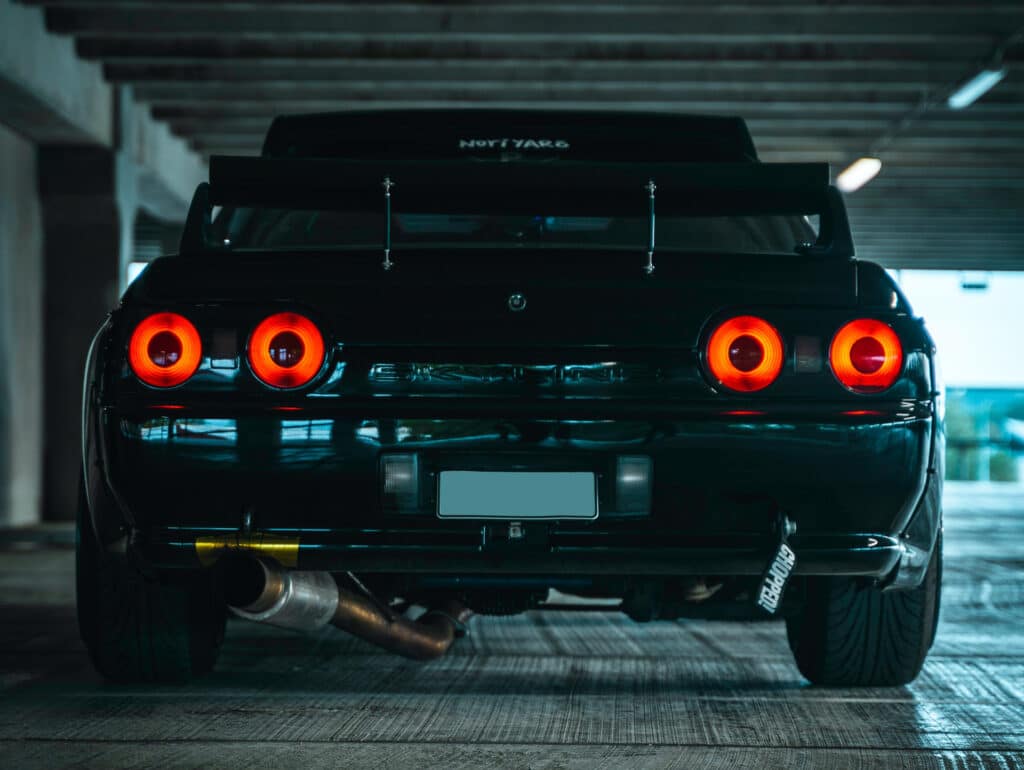
There’s a lot of misinformation about why Skylines were banned in America. Some believe that it was because they could easily outrun law enforcement vehicles like the Crown Vic and Chevrolet Caprice back in the 80s and 90s. Many people seem to think that it’s because they’re right-hand drive.
While this reasoning is entirely plausible, it is inaccurate. The Skyline ban has more to do with US import laws — primarily because the car failed to comply with Federal Motor Vehicle Safety Standards. The following circumstances added fuel to the fire.
Outrageously Expensive Compliance Testing
All cars sold in the US need to meet a massive list of US federal compliance specifications. And to meet these specifications, registered importers and/or Automakers are required to submit several cars to a private crash-testing company.
The company analyzes the cars by putting them through a battery of crash tests to ensure that they meet NHTSA, EPA, and DOT requirements.
Now as you probably know, even the best JDM cars from the late 80s and 90s were notorious for poor structural integrity. They lack some of the most basic safety features that you’d expect from cheap, modern-day economy cars. This didn’t help the situation at all.
And that’s part of the reason why only a handful of registered importers were willing to fork out enormous sums of money to do this.
Think about it — if you want to import say 10 R34 GT-Rs, you’d have to submit four of those for crash testing, allowing them to be destroyed only to find that they don’t meet the safety requirements.
After the fact, you’d have to painstakingly modify the remaining 6 GT-Rs to ensure that they meet the safety requirements.
Why Nissan Didn’t Pay for Compliance Testing
Nissan never intended to sell Skylines to the US because the profitability of doing so was questionable.
With the exception of a few very limited sales in isolated markets like Australia, the R32, R33, and R34 were made exclusively for the Japanese Domestic Market, and the global demand for these cars was more than adequate.
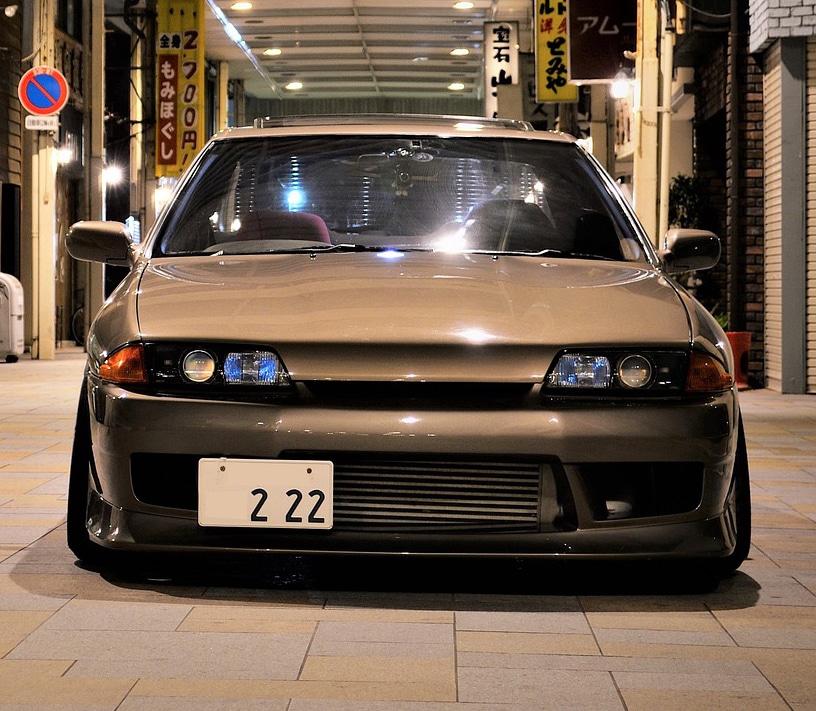
Bringing these cars into the US just wasn’t worthwhile for Nissan for several reasons.
For starters, they would’ve also had to re-engineer the car to be left-hand-drive which would mean relocating the turbocharger plumbing and several other car parts because of the steering column being in the way.
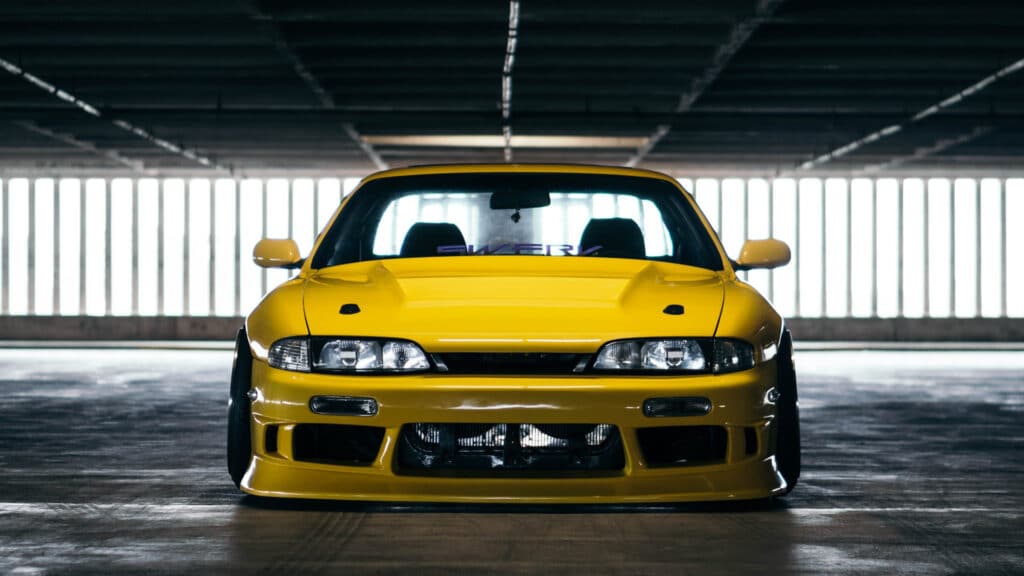
This would also call for significant structural changes to the chassis. After all that, the chances of it still being profitable were slim.
And most importantly, the car would likely have a major drop in power. Remember how the 240SX in the USA never got the SR20DET but the same car in other markets did? Something similar would’ve happened.
This would’ve watered down the lineage of the Skyline platform, especially the RB26DETT engine that came in GT-R models. The RB25DET engine most of these cars came with still output a huge amount of power, so it’s very likely they would have arrived on US soil with a non-turbo variation.
Perhaps the car would have never attained legendary status if it was sold in the US. It would’ve never become the forbidden fruit of the automotive world.
The R32 was the only Skyline to pass the US’s crash safety test, but it failed the emission standards. The passed crash test meant nothing because it failed the emission testing.
Gray Market Vehicles Infringing New Car Sales
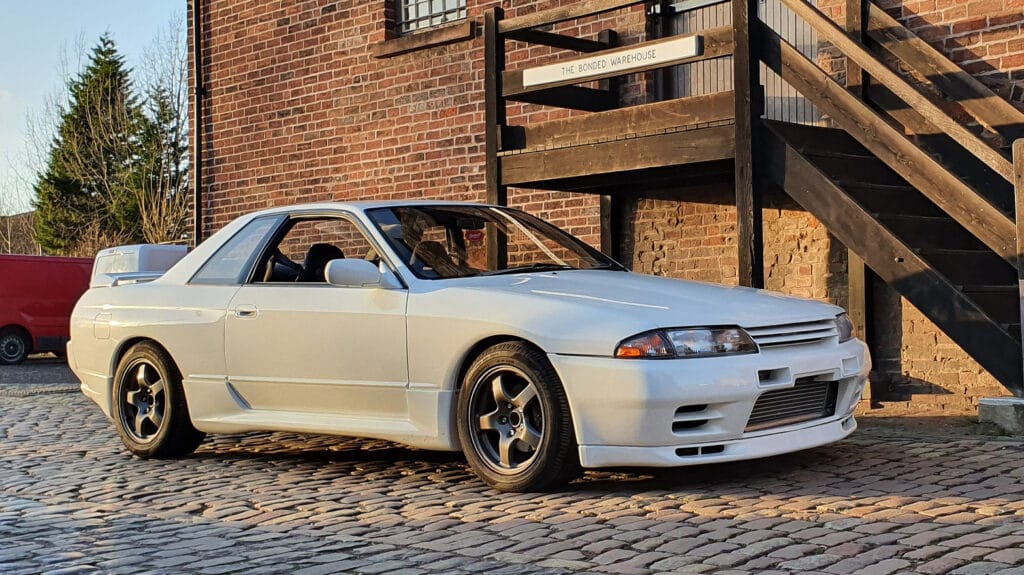
The biggest reason why Skylines was banned in America was people’s over-reliance on the gray market got to a point where it started eating away at new car sales. Obviously, Automakers didn’t take kindly to that, and so they took matters into their own hands.
Mercedes-Benz was the first to lobby Congress into passing this law. They were concerned about the safety and environmental issues of the imported vehicles due to the incompetence of some importers who didn’t modify the cars properly. It was mostly the money that was the issue though.
After relentless attempts to change the legislation around imported cars, Congress passed the Motor Vehicle Safety Compliance Act in 1988. This law single-handedly wiped out the gray market and the number of imports dropped from 70,000 to a measly 300.
The ban on illegal imports successfully restored profits and prevented tanking sales. The law was passed in 1988 and is still in effect today.
A Closer Look at the Automotive Gray Market
Nissan wasn’t designing their Skylines for the US market. Naganori Ito, the designer of the Skylines, was following in his mentor Shinichiro Sakurai’s footsteps. His assignment was to create a car that could give Porsche a run for their money in the Japan Grand Prix.
This Nissan 2000 GT was the literal father of the Skylines. So when the 2000 GT bared its fangs at the track it was to be expected that people would be turning their attention to the child of the 2000 GT.
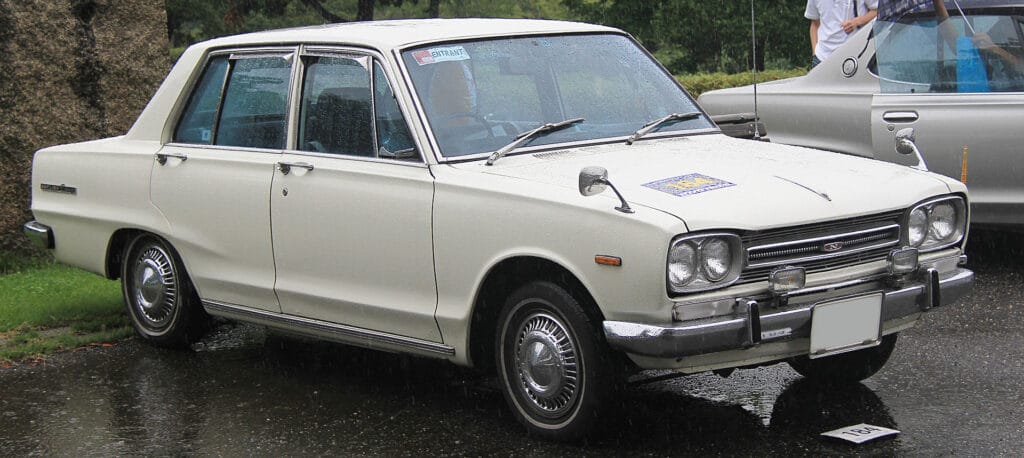
Once everybody saw how well it performed everyone wanted one. This is when the gray market came into play.
The gray market initially took off during WW2 when soldiers fell in love with European cars and found that importing and servicing the vehicles to comply with the US’s standards was cheaper than buying the vehicles in the US.
From the 60s to 80s, people were free to import cars as long as they complied with the US’s safety standards. Initially, gray market importers did an excellent job at importing vehicles and modifying them to comply with the required American standard.
While most gray market importers were legit, others found loopholes in the law and started conveniently ignoring the rules. The streets were then littered with exotic, illegal cars including the Skyline.
This is what incentivized automakers to push Congress into passing the legislation that prevented the import of gray market cars, regardless of their compliance with US safety and emissions standards.
Bottom line, the Skyline became illegal due to its failure to comply with the safety and regulations that came into effect because of the Motor Vehicle Safety Compliance Act of 1988.
Interestingly, a decade after the act was passed, the National Highway Traffic Safety Association (NHTSA) granted immunity for imported cars that were over 25 years old. This means you can legally import R32 and R33 Skylines, but not the R34, not until 2024.
How Can I Buy an R34 Skyline in America?

You’re probably wondering why there are so many R34 Skylines out and about on the American streets even though they’re illegal.
Well, a lot of them are illegally sourced. Things like using fake license plates, complex VIN swapping, and the good ol’ “kit car” trick which involves importing the car as a series of components and then putting them all together.
There are lots of different ways to source an R34 illegally, but given how infamous these cars are, the law will eventually catch up with you, and your dream car could very well be off to the crusher.
We’ve heard of instances where people who illegally drove these cars around the US had to pay a $250,000 fine or serve a 3-year jail time.
All that considered, there are ways around this, and you can legally import an R34 Skyline to the United States. It’s just really complicated and really expensive. Here are your best options.
Show or Display
The Show or Display rule is a statutory amendment to the United States Federal Motor Vehicle Safety Standards (FMVSS) that allows some privately imported cars to be exempted from the 25-year rule. This amendment became a law on August 13, 1999. It applies to some vehicles that could not be feasibly brought into compliance with the FMVSS.

Not all imported cars can be exempted under this rule, though. There are strict criteria for cars to qualify for Show or Display.
For example, the car in question needs to be:
- Historically or technologically significant,
- Produced in limited numbers (less than 500 production units).
- Able to meet import restrictions defined by the EPA.
You’re probably wondering whether or not the R34 Skyline qualifies for Show or Display because it’s evident that Nissan made way more than 500 units.
The truth is, not all R34 GT-Rs are eligible for show or display, but three variants are:
- R34 Skyline GT-R M-Spec Nür (285 units produced)
- Skyline GT-R R34 V-SPEC Early Model Limited Edition (285 units produced)
- Nissan Skyline R34 Nismo Z-Tune (19 units produced)
No other R34 GT-R is eligible for importation under the Show or Display rule. It’s worth mentioning that the LX0 Midnight Purple III is not eligible either.
Once the car is 25 years old, it is no longer considered under the Show or Display ruling and can then be driven an unlimited number of miles.
This “system”, so to speak, was created by incredibly wealthy people who lobbied for the ability to import and occasionally use collectible cars. It was famously used by Bill Gates in order to import a Porsche 959 because Porsche refused to take the steps necessary to bring the car into compliance with US safety standards.
It’s worth mentioning that there’s a possibility that you won’t be allowed to use these cars on the road, and that you can only drive them up to 2,500 miles each year.
Buy a Skyline Race Car

One way to legally import an R34 Skyline is to buy a race car. That is, an R34 which was raced professionally at several, well-recognized race series. Basically, you’re bringing it to the US in order to race it in similar events.
Know that there are legal implications for converting an ex-race car into a streetcar. You’re going to have to jump through many hoops and do a ton of legwork to be able to legally drive one of these on the street. But the point is that it’s possible.
Although the car doesn’t have to be 25 years old, you do need a letter from the manufacturer stating that it was built as a race car. You need to prove that it has features that clarify that it’s not designed for road use.
If everything works out smoothly, you’ll have an NHTSA and EPA-certified R34 Skyline race car.
Buy a Legal Motorex Skyline

This is where things start to get really interesting and controversial. If you’ve done any research on the subject of importing R34 Skylines into the United States, chances are that you’ve heard of a company called “Motorex”.
Founded in 1998, Motorex was a registered importer, that is, they were registered with the NHTSA and were authorized to import cars from Japan and other countries.
These guys made some of the first import applications to legally bring the R33 Skyline into America by following the required protocol. That is, by submitting several cars for crash testing in order to bring them into compliance.
They did this with the help of J.K Technologies — a registered importer with a long history of legalizing European sports cars for the American market.
Everything was going just fine up until that point, but things got real dodgy real quick. Motorex had dropped the ball.
They had only provided R33 Skylines for testing, post which they claimed that the crash testing and safety data for R32 and R34 Skylines was the same because the cars were “substantially similar”.
This was a lie because they’re all very different cars in terms of construction and safety features. To make things worse, Motorex eventually stopped making the necessary modifications to their cars and chose to import and sell them as is.
Their idea was to rely on the historical approval they’d been given back when they were legit. What could go wrong? A lot more!
Because they didn’t stop there. Rumour has it that they withheld a ton of cash from clients and siphoned money to fund illegal activity involving drugs and hookers. And this is only the tip of the iceberg. We’ll leave the details for another article.
The point is that the Government noticed all of this and decided to crack down on their greasy operation and eventually they had to shut shop.
Even though the required compliance mods weren’t made, a handful of Motorex-imported R34 Skylines were exempted by the NHTSA and were allowed for road use.
If you’re lucky enough to get your hands on one of these Motorex R34s, then that’s one way to do it. Or you could just wait until the car turns 25.
Wait Until 2024

According to the NHTSA, motor vehicles that are at least 25 years or older can lawfully be imported into the US. Meaning it doesn’t matter if they don’t meet the standards of the MVSCA (Motor Vehicle Safety Compliance Act).
Note that the 25-year period runs from the manufactured date. If the date is 24 years and 364 days, you will not be allowed to import this car.
This explains why you can legally purchase and import R32 and R33 Skylines with ease. The early R34s will be legal for road use in 2024. So we’d say hold your horses and just wait. Time flies.
Those in the sunny state must know that the 25-year rule might not work the same way it does in other parts of the country.
Conclusion: Can I Buy a Nissan Skyline in America?
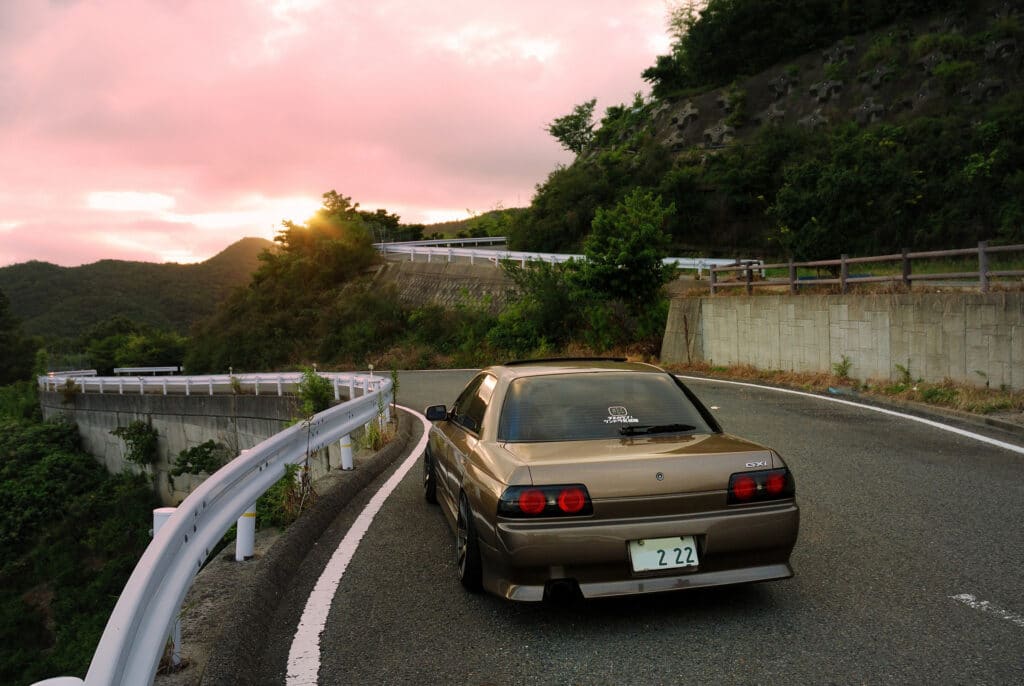
Not the R34 at least. But the R33 and R32 are legal in the US as they’re over 25 years old.
Some people might turn their nose up at some of these older cars, but I personally find the R32’s design timeless. It also helps to know that Smokey Nagata built one of the coolest R32 GT-Rs I’ve ever seen.
But if you’re only interested in an R34 Skyline, at the time of writing it remains illegal to import, unless you source one through one of the methods outlined above. Despite this, it’s one of the most desirable import tuner cars today.
The best thing to do if you want a Godzilla in your garage is to simply wait. The two-year wait significantly outweighs the amount of money you’ll have to spend. Remember, patience is a virtue.
What do you think about the whole Motorex fiasco? How much truth do you think there is to it? Let us know by leaving a comment below!

